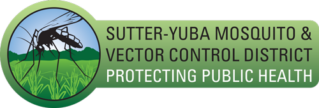Hantavirus pulmonary syndrome (HPS) is a rare but serious life-threatening disease of humans. It can be contracted by breathing airborne dust and small particles contaminated with HPS. Rodents were eventually discovered to be carriers of the virus. Since its first detection in the United States in 1993, hantavirus has been found in 35 states. More than 96% of cases have occurred in states west of the Mississippi River.
It was first recognized as a public health concern when it caused hemorrhagic fever in soldiers who served in the Hantaan area of Korea in the 1950’s. Hantavirus was first diagnosed in the United States in 1993 in the Four Corners area of the southwest (where the borders of Arizona, Colorado, New Mexico and Utah meet). By December of 1993, 53 people had been diagnosed with the illness and 32 patients had died. The Centers for Disease Control (CDC) and other agencies conducted intensive research in the area and discovered hantavirus in the urine and feces of certain species of rodents. Since then, 60 cases have been diagnosed in California. As recent as 2012, three people who had camped in Yosemite National Park in California tragically died of hantavirus. They were exposed to the virus while they camped inside Yosemite’s insulated cabins, where infected mice had sheltered for the winter. All Californians should be aware of hantavirus and take precautions to prevent exposure to the virus at their places of residence, work and recreation.
HPS is contracted mainly by inhaling tiny contaminated airborne particles of fresh or dried feces, urine or saliva left by infected rodents. Houses, cabins and other structures that are infested by rodents are common sources of contamination. Sweeping or disturbing a floor covered with rodent excrement will cause microscopic sized particles of dust and debris contaminated with the virus to become airborne. Cleaning activities in contaminated areas will also disturb contaminated particles and make them become airborne. Also, direct contact with rodent excrement and then subsequent touching, scratching or rubbing your nose, mouth or eyes may cause infection.
Symptoms of the disease are flu-like, with fever, headache, shortness of breath, severe muscle aches, coughing, vomiting, and abdominal pain. These symptoms may last from a few hours to several days. Some victims experience rapid respiratory failure. In the United States hantavirus has a fatality rate of 50%. Since 1993, over 690 cases have been diagnosed, including 73 in California. There is no vaccine for hantavirus, and no treatment. Victims of the disease are most often hospitalized and receive supportive care.
The Deer mouse (Peromyscus maniculatis), the Cotton rat (Sigmodon hispidus), the Rice rat (Oryzomys palustris) and the White-footed mouse (Peromyscus leucopus) are hantavirus carriers. The Deer mouse and the Cotton rat are typically found in rural areas but will move into urban areas if food or water sources become scarce. Other rodent species may be carriers but have not been implicated at this time. There is no evidence indicating that the virus is transmitted from person to person or from insects, pets or livestock.
The best way to reduce your risk of contracting hantavirus is to avoid contact with rodents and rodent excrement. Rodent control in and around your home is the best way to keep rodents away. Keep all food, water and garbage in containers with tight fitting lids. Don’t leave pet food and water out overnight. Wash dishes and clean up spilled food. Dispose of trash and clutter. Prevent rodents from entering your home by plugging holes and cracks with steel wool. Mice can fit through holes the size of a dime. Placing gravel under homes discourages burrowing. Place spring-loaded traps continuously. Use bait pellets as a supplement to traps. Always follow label directions when using any rodenticide.
To safely cleanup and dispose of rodent droppings, always wear rubber gloves. Thoroughly spray dead rodents, traps, droppings, etc. with any general purpose household disinfectant to deactivate any virus. After wetting everything, place the disinfectant soaked waste in a sealable plastic bag and dispose of by placing in the garbage. If you are unsure of the best disposal method for your area, contact your local health department for their advice. It is possible to encounter active hantavirus anyplace that rodents are infesting or have infested. Therefore it is strongly encouraged that your response after discovering an infestation follows the above protocol. If you don’t believe you can clean up the mess from an infestation or implement a rodent control program, hire a professional to do it for you.
